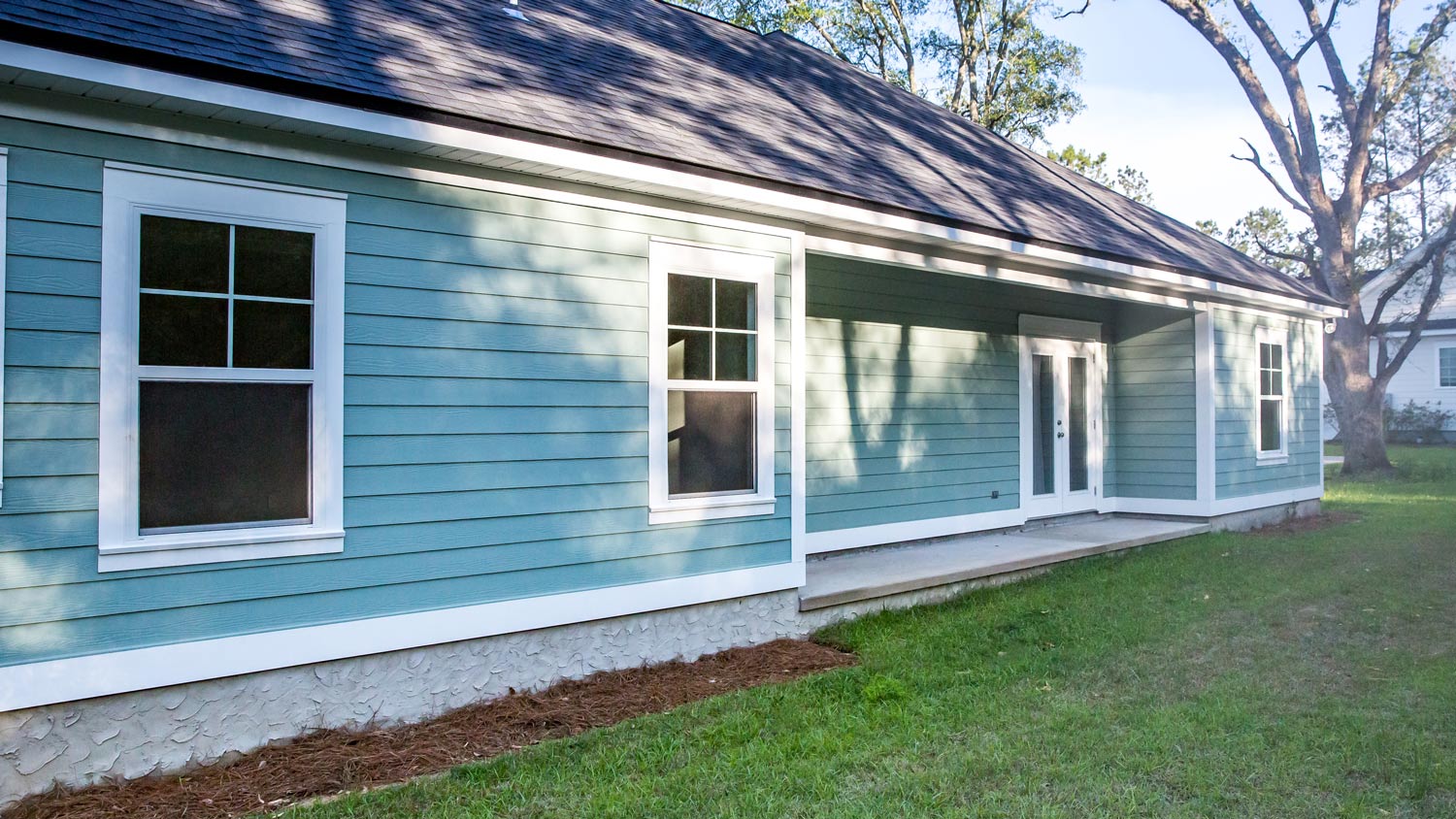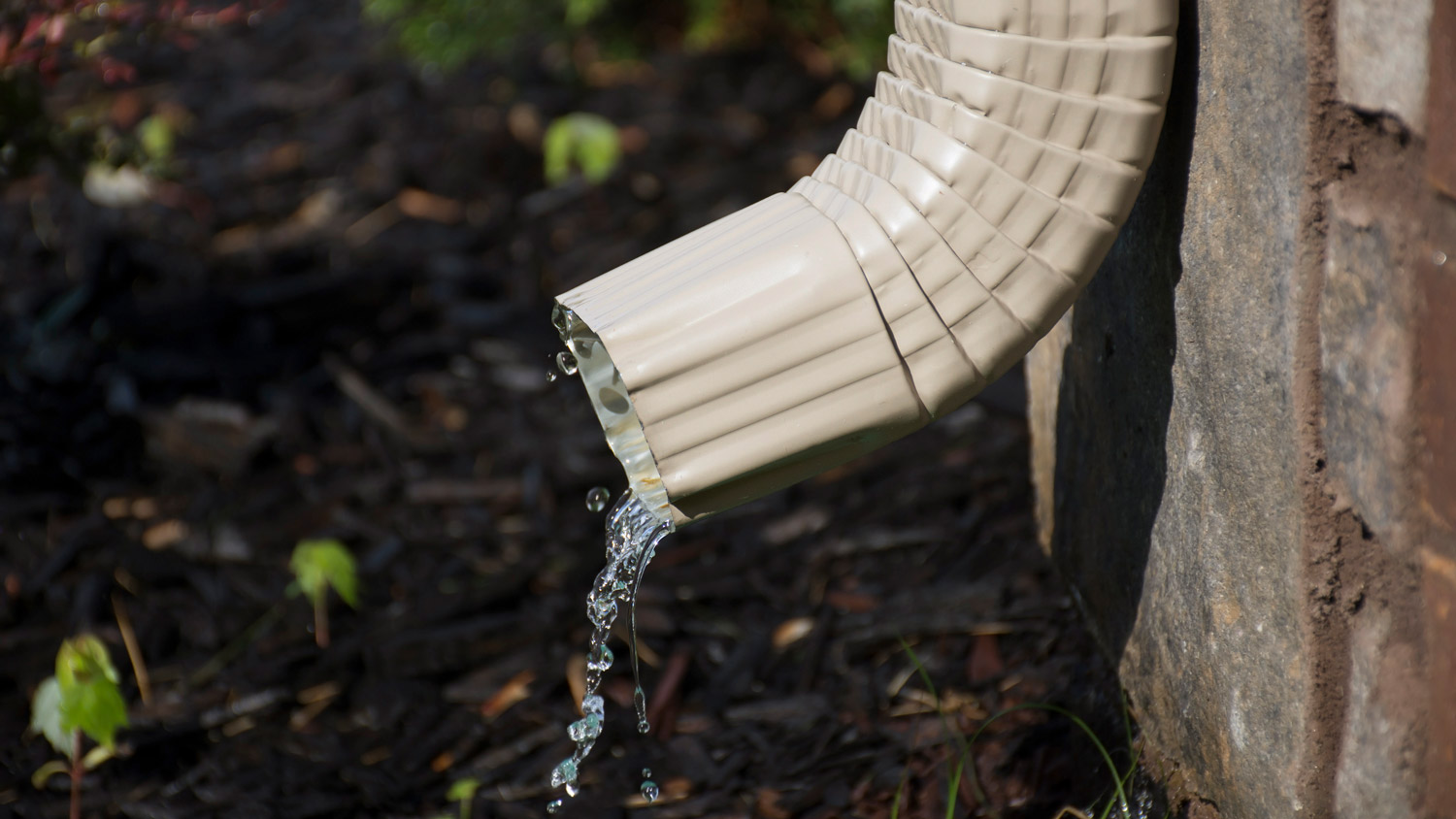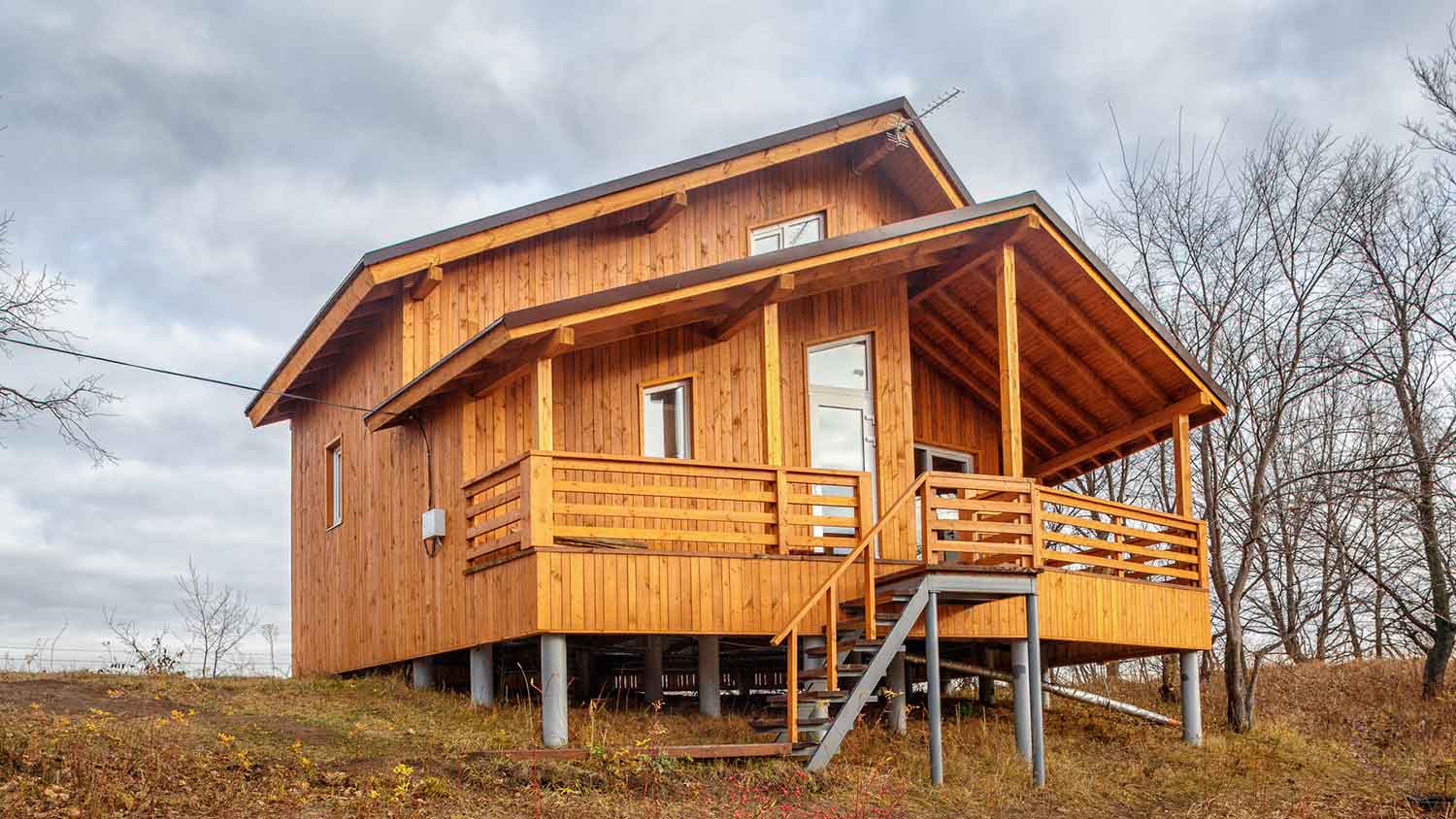Does Homeowners Insurance Cover Foundation Repair? Not Always—How to Know if You’re Covered
Only specific causes of foundation damage are covered by insurance


Most foundation damage isn’t covered by homeowners insurance.
Insurance will usually cover damage caused by certain catastrophes.
You might need additional policies for full foundation coverage.
Foundation damage can be scary, not to mention quite expensive to fix, which is why most homeowners turn to their homeowners insurance policies when an issue pops up. Unfortunately, coverage is usually based on the cause of the problems, so in many cases, you’ll be on your own for the cost of foundation repair. In this guide, we’ll explain what typically is and isn’t covered by policies, what to do if your foundation is compromised, and how to prevent issues in the first place.
Common Causes of Foundation Damage
There are a number of reasons your home may experience foundation damage, including:
Water Damage: Water damage is the most common cause of foundation damage. Moisture, mold, mildew, foundation wall cracks, wall discoloration, and musty smells are all signs of foundation-related water damage.
Shifting Soils: Soil expands and shrinks naturally. However, when the weather is dry and hot, the dirt under your foundation can contract and pull away, prompting soil shifting and instability.
Soil Erosion: When moisture doesn’t drain away from your foundation properly, the soil that supports it will likely erode. Soil erosion is a serious concern as it can result in voids or large holes beneath your foundation with no support.
Sinkholes: Sinkholes are voids in the ground that may occur naturally or pop up due to underground erosion and take a toll on your foundation. Some signs of sinkhole formation are doors and windows that won’t shut, sunken areas or indents in your yard, and cracked driveways and sidewalks.
Faulty Foundation Construction: When contractors build homes, they should be mindful of the surrounding soil so they know how to prepare and compact it correctly. Otherwise, foundation damage may arise.
When Does Homeowners Insurance Cover Foundation Repair?

Every homeowners insurance policy is different, but most major policies will cover foundation damage that’s a direct result of one of the following underlying problems:
Strong winds
Fire
Lighting strike
Vandalism
Fallen trees
Car or aircraft impact
Explosions
Water damage from a plumbing or HVAC issue
For the most part, your insurance policy will only cover your foundation repairs if a natural disaster or extreme weather caused the damage, but there are two main exceptions: earthquakes and floods. Separate policies are usually required for these coverages.
A good rule of thumb is: if an event that was out of your control—like vandalism, a tree falling, or a car crashing into your home—was the cause of the damage, then the repairs are typically covered.
When Is Foundation Repair Not Covered by Homeowners Insurance?
Generally speaking, if maintenance or foundation inspections could have prevented your foundation damage or the issue occurred because of homeowner negligence, then you’ll more likely be on the hook for the foundation repair costs. Below are some examples of underlying problems that home insurance companies won’t cover:
Foundation settlement
Damage from frost heave
Inward foundation wall movement from soil expansion
Foundation leaks
Damage resulting from poor construction
Damage from earthquakes
Damage from floods
Additional Coverage Options for Foundation Repair
As mentioned above, most foundation issues that result from earthquakes and floods aren’t covered by most homeowners insurance policies. In both cases, residents in areas that are prone to these natural disasters will need specific additional policies, like earthquake insurance or flood insurance.
How to Avoid Foundation Damage

Chances are high that, if you’re experiencing foundation damage, it’s a result of one of the situations that isn’t covered by most insurance policies. Some of the most common causes of foundation damage are settlement and foundation cracks that occur because of soil movement. As such, it’s a good idea to take some steps toward damage-proofing your foundation.
Install Gutters, Leaders, and Extenders: One of the simplest and most effective things you can do to reduce the risk of foundation problems is to install gutters, leaders, and gutter extenders on your home. These systems collect excess runoff from your roof and relocate it away from your foundation, where it won’t present an issue for your foundation.
Grade Soil Away From Your Home: Another simple way to avoid foundation problems that aren’t covered by homeowners insurance is to grade the soil away from your foundation. Just a few inches over a run of two to four feet will help naturally pull runoff away from the concrete, helping to avoid water intrusion and excess pressure on foundation walls.
Consider a Foundation Drainage System: Foundation drainage systems like French drains might be necessary in areas that see excessive rainfall or snowfall. They consist of a perforated drain pipe sunk a few feet below the ground. Gravel over the pipe pulls water in, and the pipe then redirects water to a safe place for disposal.
Earthquake Proof Your Home: There are a number of ways you can protect your home from earthquakes that can cause foundation damage and lead to hefty out-of-pocket costs. It’s a good idea to retrofit your chimney, bolt your foundation, brace crippled walls, reinforce your garage door, and place safety film over your windows.
Commit to Regular Foundation Inspections: Getting under or around your home once every six months to check for signs of water intrusion or unhealthy soil movement is a great way to catch problems early before they become expensive to repair. A foundation inspection can save you thousands of dollars down the road.
"Regular inspections are key to keeping your foundation in good shape and avoiding costly repairs. Look for cracks and address them promptly. Make sure you have proper drainage around your home by maintaining clean gutters and downspouts, grading the landscape to slope away from the foundation, and avoiding excessive watering near the foundation."
— Tim O'Shea, The Build Pros
Signs Your Foundation Needs Repair
Being able to identify the signs of foundation damage is just as important as carrying out the repairs themselves, as early detection can save you a lot of money on issues that your homeowners insurance policy doesn’t cover.
Moisture/mold in your basement. This usually stems from increased humidity under your home, and installing gutters and leaders would be best.
Foundation leak. This is often caused by foundation cracks that let water in, so crack repair and installing a drainage system are the best solutions.
Sloping floors in living space. Sloping floors have typically lost support due to foundation sinking. Underpinning is typically the best solution.
Doors/windows sticking. If all the doors and windows in your house start sticking, it could be a sign of structural damage that demands underpinning.
Cabinets/counters pulling away from the wall. This is usually a result of foundation wall bowing or foundation sinking. Stabilization with steel or carbon fiber strips or underpinning are usually the best solutions.
Foundation cracks. There are many different causes for foundation cracks. Solutions include crack repair, routine sealing, foundation stabilization, and installing a foundation drainage system.
Basement wall bowing inward. This issue is caused by hydrostatic pressure from expansive soil surrounding your foundation. The best solution is stabilization coupled with installing a foundation drainage system.
Sinking foundation. Sinking foundations can be a result of poor construction, expansive soil, sinkholes, earthquakes, and more. Underpinning is typically the preferred solution.
How Do You File a Claim for Foundation Repair?
If you do identify an issue with your foundation, it’s imperative that you get it resolved immediately, as foundation problems tend to get worse over time. Below is a quick list of steps you can take to get the proper repair for your foundation.
Determine the extent of the damage. Figure out how serious the damage is. A foundation repair company near you can help you understand its extent and decide the best course of action.
Document the damage. Take detailed notes that describe the damage. You should also snap photos and videos and include them with your notes. You’ll likely be asked for this documentation if you file a homeowners insurance claim.
Contact the police. You should get a hold of the police as soon as possible if you think the foundation damage was caused by theft or vandalism. They will guide you on the next steps.
Make temporary repairs. In the event you need to make repairs right away to ensure your safety, you can do so and potentially receive reimbursement from your insurer. Just be sure to keep your receipts.
File a home insurance claim. If you believe your home insurance policy will cover the damage, file a claim with your insurance company. Most insurers will let you do this online, by phone, or via a mobile app. Be prepared to provide details like the date and cause of the damage.
Work with an adjuster. When an insurance adjuster reaches out to you, it’s your job to provide them with all of the information they need. Point out your observations and why your policy should cover the damage. Answer any questions they have quickly and thoroughly.
Reach out to contractors. Your insurance company may recommend a contractor network you can reach out to discuss repairs and pricing. You can also ask your friends and family for referrals. The contractor you hire should be able to process the claim with your insurer and safely perform the repairs.
Frequently Asked Questions
In most cases, yes, homeowners insurance will cover burst pipes, even if they run through your foundation. Not only that, but most home insurance companies will also cover any foundation repair you need done that resulted from the plumbing leak because your insurer will view the leak as an unforeseen and non-preventable issue.
It depends on the reason for the sagging floors, but since sagging floors are usually a sign of foundation damage that you could have avoided, chances are your homeowners insurance policy will not cover the necessary repairs. Not only that, but your provider likely won’t cover the actual foundation damage that is causing the issue either, as it’s considered an avoidable type of damage, and negligence isn’t covered by most insurers.
If your foundation repair claim gets denied, the first step is to carefully read over your policy and denial letter so you understand the reason for the denial. Then, gather evidence and documents that can support your case and appeal the denial with your insurance company. If your insurer does not eventually honor your claim, you may want to file a complaint with the insurance department in your state. In some cases, it may make sense to work with an attorney and file a lawsuit.





- Your Guide to Dealing With Foundation Drain Issues
- 11 Warning Signs of Foundation Issues
- What a Foundation Inspection Is and How to Check Yours
- 10 Reasons You Really Shouldn't Delay Foundation Repairs
- Who to Call to Repair Foundation Issues
- How Long Does Foundation Repair Take?
- 6 Sinking Foundation Signs and What to Do Next
- 11 Foundation Maintenance Tips to Keep Your Home Standing Strong
- How to Know When to Walk Away From Foundation Issues
- 20 Basement and Foundation Terms Every Homeowner Should Know










